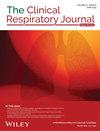Therapeutic and Prognostic Potential of G Protein-Coupled Receptors in Lung Adenocarcinoma: Evidence From Transcriptome Data and In Vitro Experiments
Abstract
Background
G protein-coupled receptors (GPCRs), the largest family of cell-surface molecules involve in various signal transduction, have recently been recognized as important drivers of cancer. However, few studies have reported on the potential of GPCRs as therapeutic targets or biomarkers in lung adenocarcinoma (LUAD).
Methods
The expression profiles and clinical data of LUAD in the GSE30219 and GSE18842 datasets of the Cancer Genome Atlas were analyzed. LUAD-associated module genes were screened utilizing weighted gene co-expression network analysis (WGCNA). Prognostic signature genes were identified by univariate Cox survival analysis, LASSO regression, and multivariate Cox regression analyses. The immune status was evaluated and drug sensitivity was determined, conducting in vitro experiments for validation.
Results
Patients with LUAD exhibited lower GPCR score than the controls, and 38 dysregulated GPCRs were identified by screening with differential analysis and WGCNA module genes. An optimal prognostic signature was identified, including OR51E1, LGR4, ADRB1, ADGRD1, and ADGRE3. The model established based on these five genes harbored moderate predictive performance for the survival of patients with LUAD. The risk score was negatively correlated with the infiltrating levels of multiple immune cells, including M2 macrophages, myeloid dendritic cells, and neutrophils, but positively correlated with fewer immune cells, such as Th1/Th2 CD4 + T cell. ADGRE3 and OR51E1 expression was positively correlated with drug sensitivity, including to cisplatin, ribociclib, and pevonedistat. Silencing OR51E1 inhibited the malignant cytological behaviors of LUAD cells.
Conclusion
GPCRs demonstrated prognostic potential in LUAD, with five genes identified as potential therapeutic targets and prognostic biomarkers for LUAD.


 求助内容:
求助内容: 应助结果提醒方式:
应助结果提醒方式:


